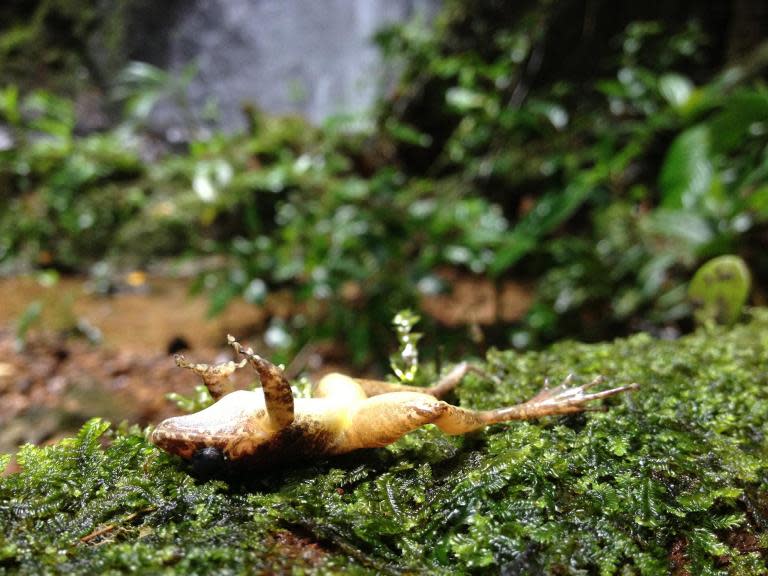Scientists who discovered ‘amphibian plague’ worried a dangerous new hybrid disease will emerge
The team that cracked the case of the “amphibian plague” devastating frog and toad populations around the world are worried that worse is still to come.
A killer fungus known as Bd has triggered a mass amphibian extinction that has spread across every continent and been described as among the worst infectious diseases ever recorded.
Scientists have described rainforests struck silent as the plague wiped out entire populations of local frogs in mere months, stifling their night-time chorus of croaks.
At least 200 frog species are thought to have been driven to extinction since the 1970s, with particularly heavy losses in Bd-infested parts of Latin America.
Intense research efforts have identified the disease and traced it to its source in east Asia, and local conservation groups have worked tirelessly to quarantine the fragmented populations that remain.
However, with the international trade in amphibians continuing unabated, the team credited with discovering the disease are concerned about what the future may bring.
In particular, the melding of different Bd strains from around the world has the potential to create hybrids that are even deadlier than current incarnations.
“If we keep hauling amphibians back and forth, you don’t know what the outcome is going to be, you might get something that’s more pathogenic [capable of causing disease],” said Dr Joyce Longcore, the scientist who first identified the unusual aquatic fungus known as Bd.
“Unless you stop international travel and international trade, things like this are going to continue, and you can make your rules stronger for trade but if you have any volume at all something is going to get through.”
For decades amphibians have been traded for food, as pets, or even – in the case of the African clawed frog – for use in crude pregnancy tests.
This transport of living amphibians has already been identified as the trigger for the original Bd outbreak, and recent lab tests revealed hybrid forms emerging in Brazil and South Africa that appear to be deadlier than the original.
Dr Longcore warned that not enough concern was given to the international transport of microscopic creatures, and this had already led to comparable losses in North American trees infected with foreign diseases.
She said she was afraid that more enormous declines in animals and plants were bound to follow in the coming years.
“It’s one of those things where I’m glad to be 80 – I’m a country person and I don’t want to lose all our biodiversity,” she said.
Dr Longcore was first enlisted in the 1990s to crack the case when poison dart frogs at the Smithsonian National Zoo kept dying of a mysterious infection.
Tiny creatures appeared to be infecting the animals’ skin, affecting their ability to regulate water and ultimately leading to death.
Immediately recognising it as belonging to an unusual group of fungi known as chytrids more known for infesting algae and rotting plant material, she set about investigating the problem. Soon, reports were flooding in of die-offs around the world that appeared to be linked to the disease.
Ultimately, Dr Longcore and a small team that had assembled to investigate Bd – or Batrachochytrium dendrobatidis – realised the disease was not restricted to zoos and was in fact a driver in the mysterious disappearance of amphibians all over the world.
Since then efforts have been made to treat frogs infected with the fungus, and Dr Don Nichols – who worked on the original poison dart frogs – said there was some evidence populations are developing resistance to the disease.
With another chytrid variety now emerging as a threat to salamanders living in Europe and Asia, scientists are resolved to stop it spreading across the oceans.
“We don’t seem to have it in the US where we have some of the biggest salamander populations in the world,” said Dr Allan Pessier, a pathologist who also helped identify the disease.
Using rigorous surveillance and testing before animals are moved, he said he hoped the same mistakes made with Bd could be avoided with this disease.
“This time, we are able to do a little bit better,” he said.

 Yahoo News
Yahoo News 

